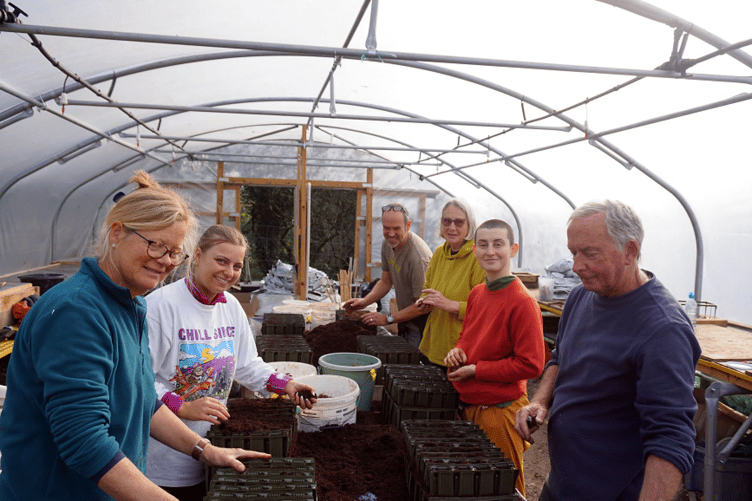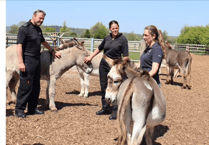WITH work beginning to double the size of one of England’s last remaining temperate rainforests, the Mid-Devon Advertiser’s Julian Barnes went behind the scenes to see how local charity Moor Trees is working to regenerate not just Wistman’s Woods, but forests across Dartmoor and South Devon.
Like many parts of the UK, Dartmoor was once a much more forested landscape, thick woodland blanketing the valleys and lower slopes, flourishing with wildlife.
Much of that habitat would have been temperate rainforest; a little known habitat found all along the west coast of the British Isles.
Although temperate rainforests once covered a fifth of the UK, the habitat was largely farmed and grazed out of existence over thousands of years. Globally, the habitat is now rarer than its tropical counterpart, covering just 1% of the country.
Despite this, some unique wooded worlds on our doorstep, such as Wistman’s Wood, Fingle Woods and Lydford Gorge.
But these vanishingly rare habitats are some of the most biodiverse areas in Europe, and scientists say the development and growth of temperate rainforests is fundamental for nature’s recovery, stopping climate change and adapting to its impacts.
Although these primeval forests may never be fully recreated, Moor Trees is working to restore the balance between open moorland and the rich, wooded valleys.
We’re very fortunate in Devon not just to have these habitats but also the conditions to grow and expand them,’ said Helen Aldis, Chief Executive at Moor Trees.
She added: ‘We’ve been around for over 20 years now, and our focus is on planting more trees in native woodland on Dartmoor and the local area.
‘As a local charity we have two local community tree nurseries and over 30 local species that we’re growing here so we’re a really valuable resource for the local community and for local planting schemes every winter.’
While the supply of saplings may seem readily available, getting those with the right genetics to thrive in the moor’s harsh climate is much harder.
Dave Lewis, Dartington’s Tree Nursery Officer explained: ‘You can buy trees from anywhere but they’ll be from Scotland or elsewhere, rather than having the specific genetics that are adapted to Dartmoor and resistant to disease and the tough conditions.
‘But also, rather than getting a tractor in a field and churning them out, it’s about engaging people in the journey of the seeds. Local volunteers collect them, pot them up and plant them, it’s an amazing full journey for those involved.’
That hyper-local ethos is a big part of Moor Trees’s latest project, working with the Dutchy of Cornwall to regenerate and expand Wistman’s Wood.
Last week, Moor Trees volunteers collected over 5,000 acorns in a groundbreaking project to double the size of the iconic woodland by 2040.
The acorns along with the rowan seeds gathered last month from the site will stay at the nursery for two years before being brought back to the site and planted on the periphery of the woodland and the valley opposite.
Surrounded by oak saplings, volunteers get busy sorting and germinating the acorns at the nursery.

Dave said: ‘We bring all the acorns here, we weigh them all, roughly count them and make sure they can be tracked from our nursery so we can know where they’ve come from and what species they are.
‘Then the acorns will be potted up into these cells of 40 pots by our amazing group of volunteers to germinate and be grown here for several years.’
With the first batch of acorns collected last year and the first saplings due to go into the ground next autumn, the project is entering an exciting stage.
Helen added: ‘These trees won’t just be planted around the existing woodland but also around the other side of the valley, so this will be a really ambitious and promising regeneration project that we’re really excited to be part of.’




Comments
This article has no comments yet. Be the first to leave a comment.